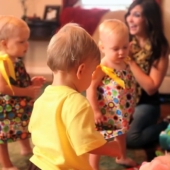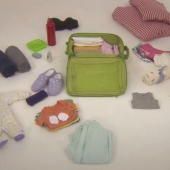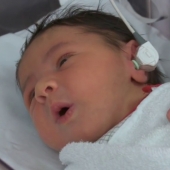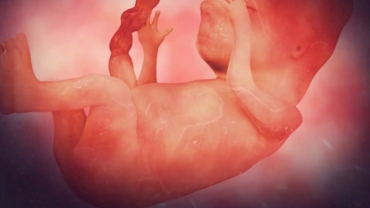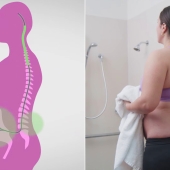Playing is serious business for a baby. It helps him learn how objects work and what they're called. And it prepares him for motor milestones.
Lay your 3-month-old on his back. Hold his ankles and gently bend his knees into his stomach, then stretch them out to increase his flexibility and help him get a sense of where his legs are in space.
You can make it more fun by saying "in and out," singing "Row, Row, Row Your Boat," and kissing your baby's feet. Do the same with his arms.
Hold them out to the sides so his body forms a T, and bring them straight up over his body so he becomes accustomed to moving them freely. Starting at 3 months, lay your baby on his back and dangle a toy above him to see if he can grasp it and bring it to his mouth.
At first, he may just swat it. Move the toy higher, lower, and to the side. Try different objects so he can learn to approach them with his hand in a correct position.
Place your 6-month-old on an exercise ball and hold him securely by the hips. Tilt the ball slowly in all directions so that he can learn to shift his weight. It will strengthen his core and improve his balance.
Make it more fun by bouncing him gently and singing rhymes. Sit your 6-month-old up, then place a toy near him and let him reach for it and pick it up. Trying new toys will help him get used to handling things that are different sizes and weights.
Once your baby starts creeping, generally between 7 and 9 months, block his path with a cushion. If he scoots around it, set up a row of pillows so he has to climb over them. Moving on his hands and knees helps your baby develop strength in his hips and trunk, which are necessary for standing; and the muscles of the shoulder girdle, which will help his handwriting in the future.
- 19 views

